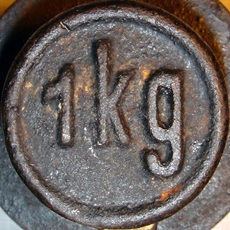How the kilogram has put on weight
08 Jan 2013
Using a state-of-the-art Theta-probe XPS machine – the only one of its kind in the world – the team has shown the original kilogram is likely to be tens of micrograms heavier than it was when the first standard was set in 1875.
 And they say a suntan could be the key to helping it lose weight.
And they say a suntan could be the key to helping it lose weight.
The original kilogram – known as the International Prototype Kilogram or the IPK – is the standard against which all other measurements of mass are set. Stored in the International Bureau of Weights and Measures in Paris, forty official replicas of the IPK were made in 1884 and distributed around the world in order to standardise mass. The UK holds replica 18 at the National Physical Laboratory (NPL).
But despite efforts to protect the IPK and its duplicates, industrialisation and modern living have taken their toll on the platinum-based weights and contaminants have built up on the surface.
Now Professor Peter Cumpson and Dr Naoko Sano have used cutting-edge X-ray Photoelectron Spectroscopy (XPS) to analyse surfaces similar to the standard kilogram to assess the build-up of hydrocarbons – and how to remove them.
Publishing their findings this month in the journal of Metrologia, they reveal how giving the kilogram a suntan could be the answer to helping it lose weight.